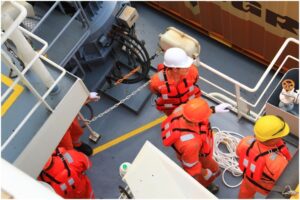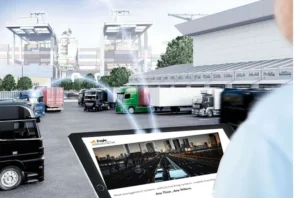
When scaling up, how you build your pipes matters. Pipework fabrication is more than welding steel tubes. It’s about ensuring safety, efficiency, and reliability. In industrial setups—like oil plants, chemical factories, or power stations—every joint and bend has to be precise. You need expert planning, skilled hands, and top‑quality materials. In this post, I’ll guide you through the essential steps and best practices for large‑scale industrial pipework fabrication.
1. Why Pipework Fabrication Matters
- Durability and Safety
- Big factories rely on a steady flow of liquids or gases. A crack or leak causes shutdowns, cleanup costs, or worse—hazards. Well‑fabricated pipework prevents that.
- Big factories rely on a steady flow of liquids or gases. A crack or leak causes shutdowns, cleanup costs, or worse—hazards. Well‑fabricated pipework prevents that.
- Operational Efficiency
- Properly made pipelines reduce friction and pressure loss. That saves energy and keeps machines running smoothly.
- Properly made pipelines reduce friction and pressure loss. That saves energy and keeps machines running smoothly.
- Compliance and Quality
- Industry standards set strict rules for welding, material grades, and testing. Good fabrication meets or breaks those standards.
2. Getting Started: Planning & Design
- Understand the Flow Needs
Capture data: pressure, temperature, type of fluid. - Choose the Right Materials
Use steel, stainless steel, or alloy pipes, depending on your environment. - Modular Design
Break the plant into sections. That helps with transport, installation, and future maintenance.
This initial planning sets the tone. If you plan wisely, the rest flows better.
3. Fabrication Process: From Blueprint to Reality
3.1 Cutting & Forming
- Cut pipes to exact lengths.
- Bend pipes using mandrels or press machines to match designs.
3.2 Welding & Joining
- Expert welders join sections.
- They follow a precise weld procedure.
3.3 Inspection & Testing
- Non‑destructive tests like X‑ray or ultrasonic scans check for cracks.
- Hydrostatic pressure tests ensure pipes don’t leak under stress.
3.4 Pre‑Assembly
- Pre‑assembled modules arrive ready to fit together at the site.
- That speeds up installation and cuts risky work at height or in confined spaces.
4. Safety: A Core Concern
- Welding safety: Welders wear protective gear to prevent burns or eye damage.
- Handling heavy sections: Teams use cranes and slings. They work with traffic‑management plans.
- Confined spaces: If a task is performed in a confined area, special training and permits are required.
Safety is never optional. It protects your crew and your assets.
5. The Role of Pipework Fabrication
In large plants, pipework fabrication links different zones—furnaces, pumps, tanks—into one system. Skilled teams work offsite, crafting each module. Then they deliver and integrate these modules seamlessly onsite. Transitioning between steel production and power generation plants? Every bend, joint, and flange is tailor‑made.
Here are the key roles:
- Seamless integration: Pre‑fab helps sections connect without delay.
- Reduced field hours: More work gets done in a factory setting, safe and efficient.
- Consistent quality: Repetitive, controlled routines ensure top results.
The power of “pipework fabrication” truly shines in this context.
6. Quality Control & Traceability
- Material Certificates: Every pipe section is accompanied by proof of origin, grade, and test records.
- Weld records: Each joint is logged, including the name of the welder and the conditions under which it was welded.
- Inspection reports: All tests are recorded and stored.
This traceability means you can always track back, if an issue appears later.
7. Common Challenges & Smart Solutions
Large projects bring lots of risks, but you can beat them.
| Challenge | Smart Fix |
| Tight deadlines | Use modular pipework fabrication offsite |
| Weather delays onsite | Build indoors to avoid storms and heat waves |
| Changing specifications | Use flexible designs and adjustable supports |
| Material shortages | Keep buffer stocks and backup suppliers |
These solutions ensure fewer delays and lower costs in the long run.
8. Case Study: Steel Mill Expansion
Recently, a steel mill in Asia added a new blast furnace. The project required hundreds of metres of high‑pressure piping.
- Engineers pre‑fabricated modules in a warehouse.
- They used stainless alloy pipes to resist heat and corrosion.
- On-site, they slotted modules into place within hours.
- Final inspection passed first time—thanks to thorough weld checks.
That real‑world example highlights how smooth planning and fabrication work hand in hand.
9. Future Trends in Pipework Fabrication
- Digital twins: Virtual models mirror physical pipes. Engineers test flow and stress online.
- Robotic welding: Robots offer precise, repeatable welds—even in tight spaces.
- Additive manufacturing: 3D‑printed fittings allow custom shapes that traditional methods can’t make.
These innovations boost accuracy and cut time further.
10. Best Practices Summary
- Begin with clear planning and data.
- Pre‑fabricate modules in controlled environments.
- Use skilled welders and strict testing routines.
- Log every step—from materials to final inspection.
- Embrace modern tech: digital simulations, automation, and 3D parts.
Conclusion
Large‑scale industrial pipework fabrication isn’t just about connecting pipes. It’s about building a system that’s safe, reliable, and long‑lasting. When done right, it saves time, cuts costs, and boosts confidence in the system.






